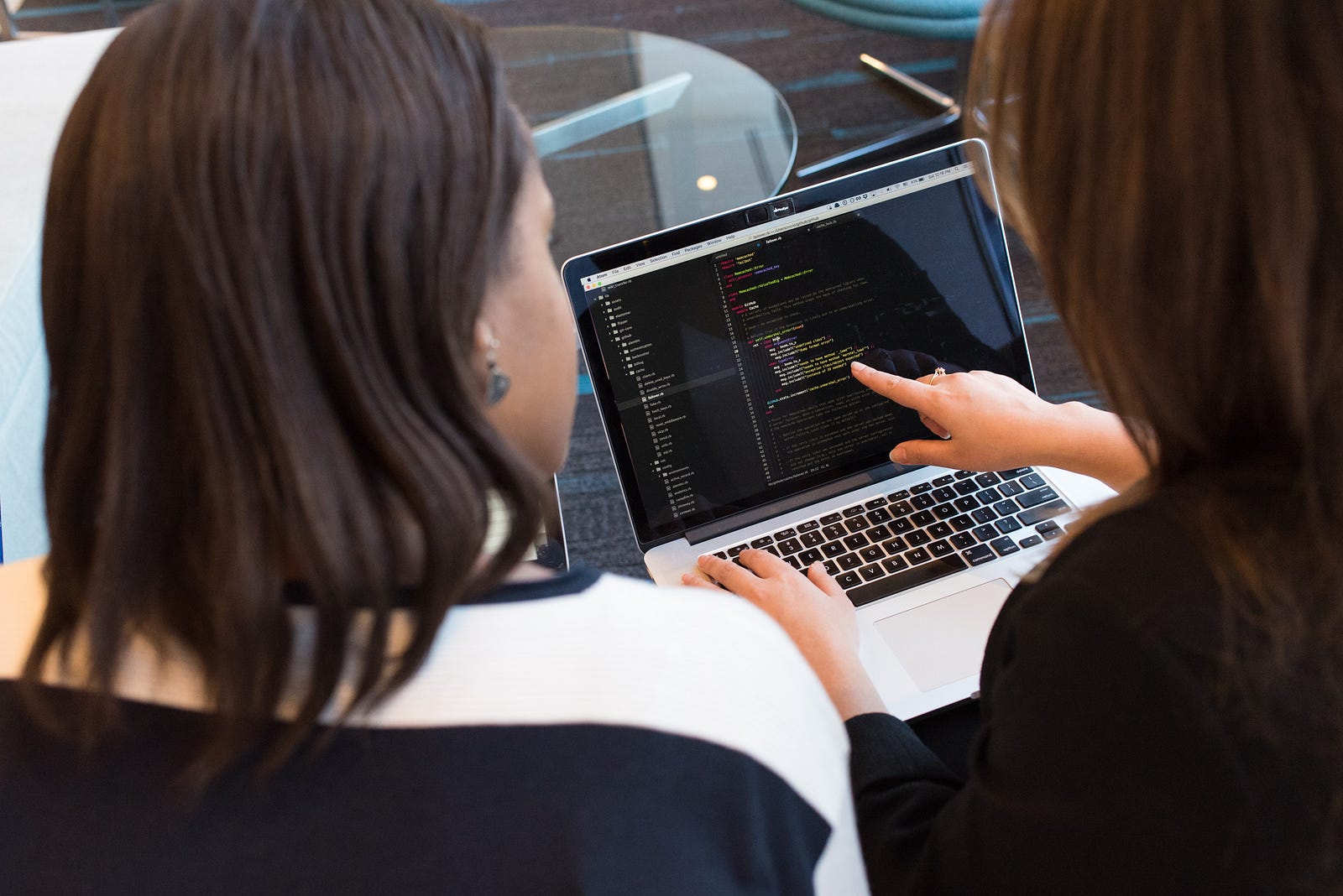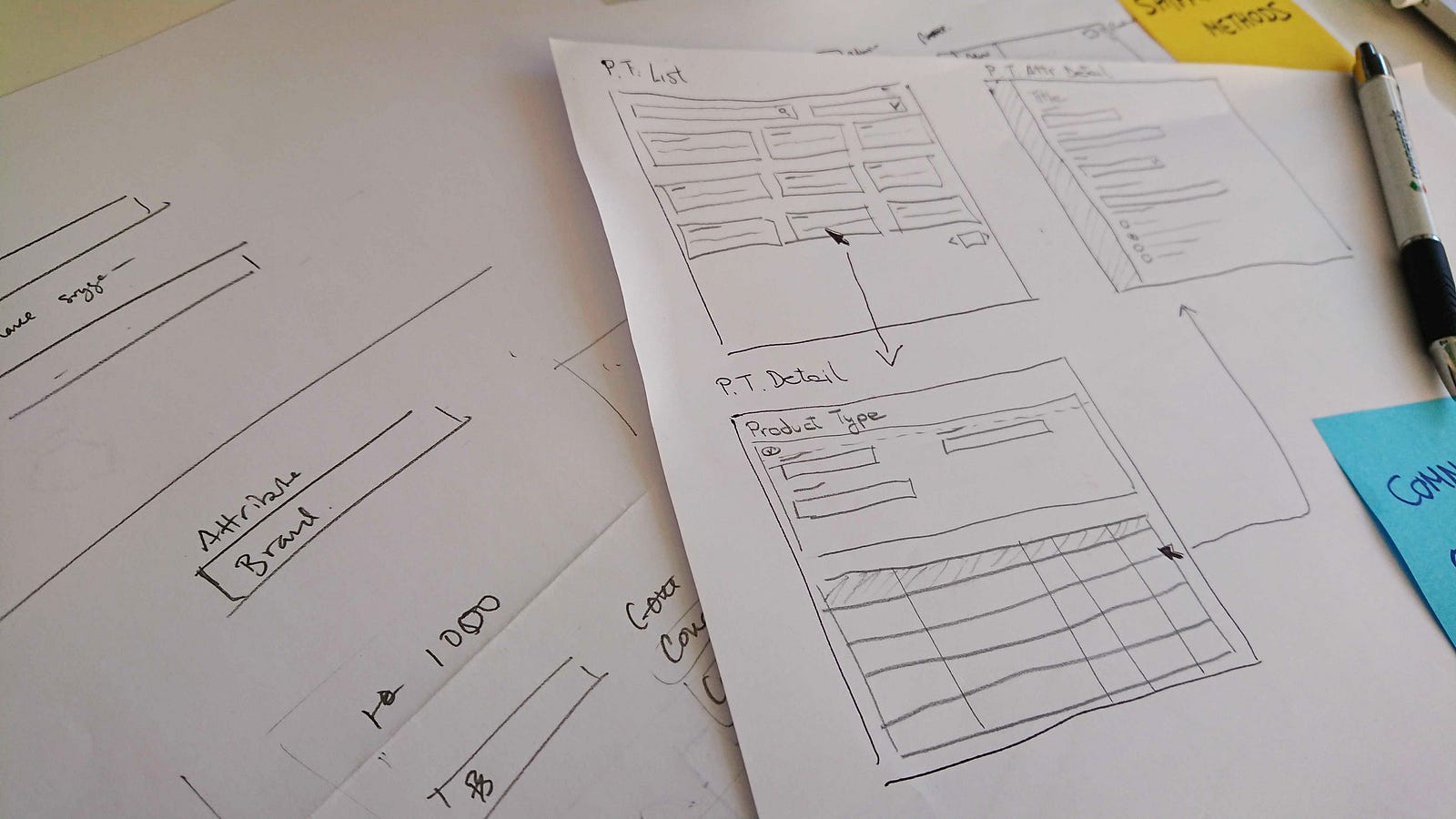Reducing the Distance When the UX Designer Works Remotely
Ideas and techniques based on my experience as a UX/UI designer, working remotely with my vertical team.
As my colleague Ida explained, the product team has embraced vertical, cross-functional teams. Each vertical team has its own UX/UI designer that focuses on the team’s area of responsibility. I am one of them. However, we are not sitting in the same office as the rest of our vertical team members.
Even though the situation was initially inconvenient, our vertical team has overcome this difficulty. These are the steps we have followed to succeed on a better remote collaboration, with special focus on my role as UX designer.
Start in person. Continue remote
In this blog, we have already spoken about the importance of small teams. They create meaningful connections and build trust. But how do we establish these connections while apart?
Building good human relations is harder when you are not in the same office. That’s why three weeks after I joined the vertical team, I decided to visit them. Starting the relationship in person sets up the solid foundation of your professional collaboration. Having the vertical team together in one place as frequent as possible has brought us a good outcome.
Starting the relationship in person sets up the solid foundation of your professional collaboration.
Once you are in the same room, there are many activities you can do to reduce the technical and personal gap. Here are the ones that I’ve tried out and have helped:
1. Get to know each other better
The first point is quite obvious and you should apply it either you are in the same room or not. You need to get to know your team better and vice versa. Organise an activity all together outside of work, in a more relaxed environment. Knowing somebody more personally always creates empathy. It is also a great opportunity to refute wrong myths they might think about the role of a UX designer. Ask about their previous job experience and their experience working with designers.
2. Bring UX mentality to the team
Even though the role of UX and UI designers are not new in the IT industry, we need to explain often the differences between those two to other stakeholders nowadays. Some people still believe that design is only about making a feature nice and happens at the end of the chain. This type of thinking is often associated with waterfall models of software development. It can get worse if all the UX/UI designers of a company are sitting together far from the rest. Teams can end up isolating that group as they will see the design department as an external agency. The sooner you start working towards changing such mentality, the better.
Share with the vertical team any UX related task you would like to include into your design iterations and the team workflow. Explain what is it for and the benefits for each team member this can bring. It can be a certain way of doing research, a specific type of test or any other tactic. Giving examples of successful use cases can help you to convince the most skeptical ones. Showing the positive aspects of your area of expertise proves that you are there to help as well. If that works out, share the results of that task with the team afterwards.
During my first few months working with the vertical team, I’ve suggested conducting usability tests. The goal was to verify whether the proposal we were discussing and working on was the right approach. As none of us were the real end user, it was a good task to perform. Once I performed those with real users, I’ve presented the learnings to the product team. This guarantees that the design decisions taken are user approved before implementation. It can also inspire other vertical teams to follow similar design strategies.

Brainstorming can show you a completely different perspective and solution to the same problem.
Get a whiteboard and draw your proposals for the feature that you are working on. Then discuss it and brainstorm with the entire team. Inviting everybody to “mess-up” with your sketch shows a willing to listen and trust on their feedback. Don’t forget to explain what consequences their suggestions will bring to the user. That’s a great way to start spreading UX culture within the team.
Although a bit more challenging, you can try this exercise remotely as well. But as it happens in usability tests, being able to see everybody’s physical reactions is as important as what they say. That’s why it is beneficial that the first time you try this out within the team, you do it in person.
4. Don’t be afraid of code
Since I started working in a web environment, I have read the same quote over and over again. “If you are a designer, you need to know how to code”. I believe a more accurate rule that UX and UI designers should apply is the following:
If you are a designer, you need to understand each stakeholder’s complexities. That’s our job in a nutshell.
There are many ways to get to know the technical limitations developers face. An effective one is sitting down with a developer and to observe how they work and which tools they use. This technique is called “shadowing” and it is used to train people in other industries. When new experts start working in an Apple store, they have to spend a week shadowing a senior specialist. That’s the way for them to learn more about the do’s and don’t of the job.
If you are a developer reading this, bring the designer to technical meetings. The sooner you do it, the earlier they will start to become familiar with technical concepts. Terms that they will see in technical documentation when they start digging more on it. It can help designers to understand the complexities a design proposal can bring.

Taking five minutes to explain a technical detail can save both the developer and the designer time afterwards.
UX designers will identify all these techniques as some of the best practices in user testing. What nobody in our industry dares to say is that we have more than one user to think about. It is clear that the tasks that we work on on a daily basis have the end user in mind. But our own team-mates are another type of user as well: the users of our design proposals. It’s to them, after all, that we present new ideas to and receive our deliverables from. A UX designer needs to understand the vertical team motivations and goals. You should never forget about all those when working on a task.
(Bidirectional) Communication, communication and communication
Once you are back to your daily routine, the challenge is to make that bond that you have established strong. Being far away is not an excuse for the team to forget about who’s on the other side or not keeping a daily contact with them.
At first, you might need to establish the habit by reminding you are still there. Ask to take part in the team meetings, even if they might sound technical at first. In those, you can learn the common shared language. Avoid that dev-design gap that happens often as soon as possible. Expressing design decisions using the same vocabulary will avoid confusion. Don’t be afraid to ask what you don’t understand. Most of the people are happy to explain to you what they know and do.
After a few weeks, the habit of having a continuous contact will be established. The challenge then consists on being consistent with the bidirectional contact.
Our vertical team follow a Scrum way to work without estimations. This type of structure has moved us away from a more sequential development. We do two-week sprints with sprint plannings, daily standups (with a physical board), retrospectives and grooming sessions.
Grooming sessions are one of the most essential meetings we hold.
Grooming sessions are one of the most essential meetings we hold. We go through the upcoming frontend tasks inside our backlog and refine them. We review the user flow and interaction we have already agreed upon and take a look at the proposed UI. Backend developers are responsible of checking the API implementation. They can confirm whether the backend allows us to build that or should be changed. Then, we write down the acceptance criteria with the help of the product owner. We also verify that the task does not need to be split into smaller tasks.
In most cases, this is the first time that all team members are aware of what’s coming up. Everybody takes a more active role by discussing how something needs to be built.

Continuous communication, the most essential part of remote collaboration
We also have separate meetings when we need to discuss a certain feature or task. We go over the design proposals with at least one frontend and one backend developers and the product owner. In those, we take meeting notes that we store so we can always go back to them.
This type of structure helps us having a continuous communication within the team. But it can be complex if the technical setup is not a good one. The equipment ought to provide good video and sound quality. Avoid wasting time with technical issues as much as possible.
As with any relationship, the effort of not losing the contact should come from both sides. Leaving somebody apart, even the far one does nothing but harm. Nobody should forget that a designer can help with their expertise on any of the steps of the project. By not conferring with the designer, you are communicating to the team UX is not relevant at all. Furthermore, you are giving the designer the impression that you don’t trust in their expertise.
Writing more is not a waste of time
When you rely on internet connection, bringing the entire team to a meeting can be hard. Once of the skills that I’ve been improving a lot since I work on remote is writing proposals.
When the conference call fails, the design decisions in written form is my backup plan. In those writings I provide a detailed explanation. They include the pros and cons for the user and describe the edge cases that I can oversee. Of course, those documents include pictures of sketches, screenshots and/or digital prototypes. Afterwards, I’ve shared that with the team.
This has been a good exercise for me to get to synthesise ideas, being as clear as possible. This is quite essential when you need to present proposals on a conference call. Discuss something in written form is like having meeting note without the meeting.

Paper prototypes are harder to use to communicate ideas remotely
Giving and receiving rapid feedback being remote is not as easy as in person. The fact that I’m not in the same room has made me jump from paper prototypes to digital ones. I use digital prototypes during meetings to show the possible user flow and layout.
Most of the times, the round of feedback happens during the meetings scheduled earlier on. This makes the design iterations longer than normal. But the biggest disadvantage in this case is the lack of useful feedback that happens often.
Examples of unhelpful feedback sentences are:
“We cannot build that”,
“The answer is too technical for you”
“It is easier to explain if I could go to your desk”
No matter your role, always prioritise giving constructive feedback to your colleagues. No excuses. Writing a short message on a chat or making a quick video call to explain something takes less than 5 minutes.
Even though the reasons might be too technical, get interested in those. It is your responsibility to learn more about the limitations the team faces. Your design iterations will get shorter. This becomes essential for the teams that have to deal with deadlines.
Results after one year
More than one year has passed since we are working with such setup. I must say, I’m proud of the level of collaborative thinking the team have achieved so far. Nobody works solo and we always bring expertise to the table. I’m quite confident that my work wouldn’t differ much if I were sitting in the same room with my teammates. We keep gathering together from time to time to not lose the human touch. I’ve visited them once every two months while some of my teammates have visited me at least once.
A few days ago, one of my colleagues told me that if he ever starts deciding on things on his own, I should let him know. This is the exact fear that everybody working on a vertical team should have. Together as a team we have reached a consensus of how we want to work. We find solutions to the problems together as a team. We have built trust between each other. Trust in providing feedback or discussing points of friction. And above all, we take care of not leaving the remote team member behind, no matter what their role in the team is.
View original content: Here
Related commercetools News: